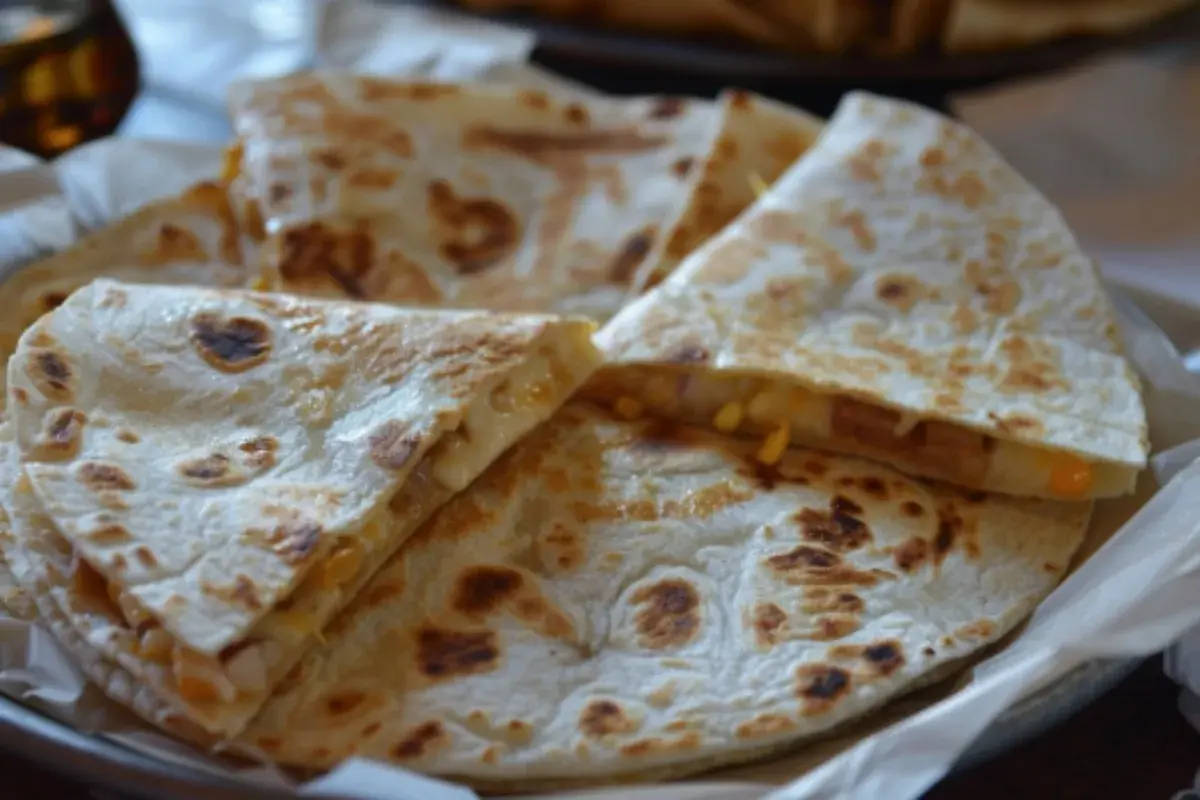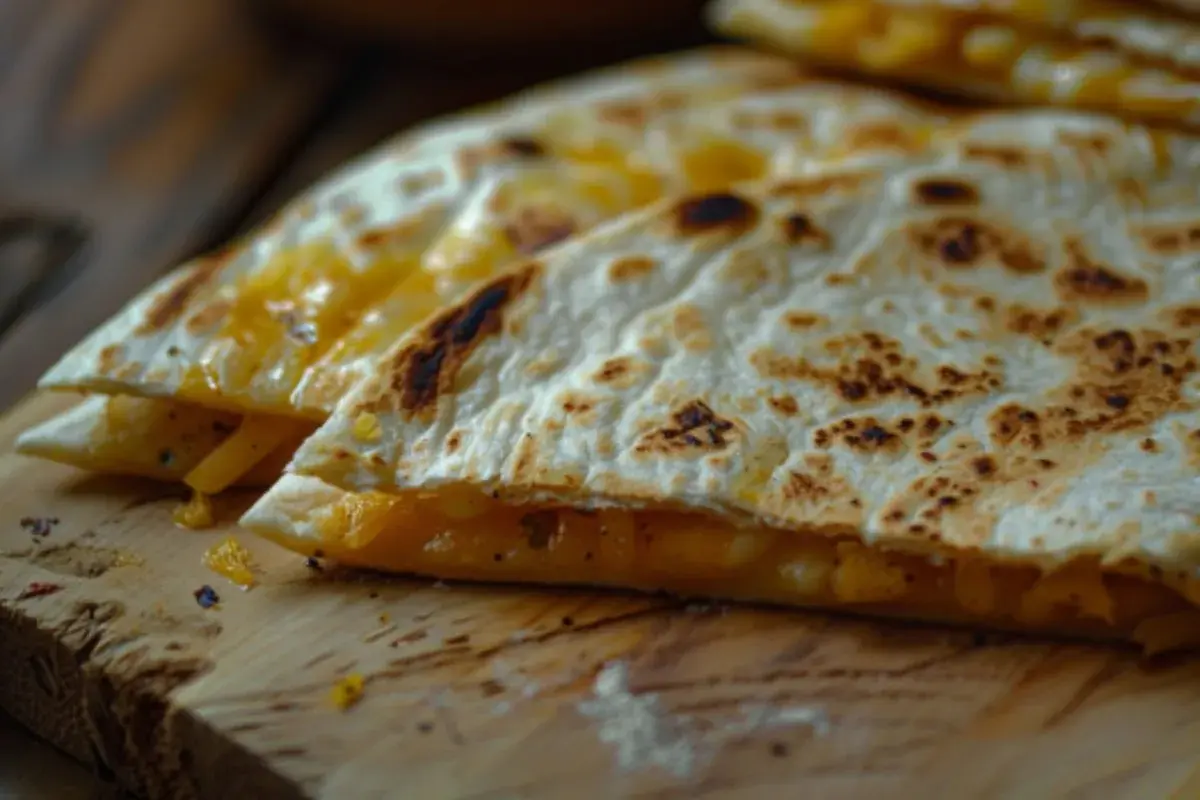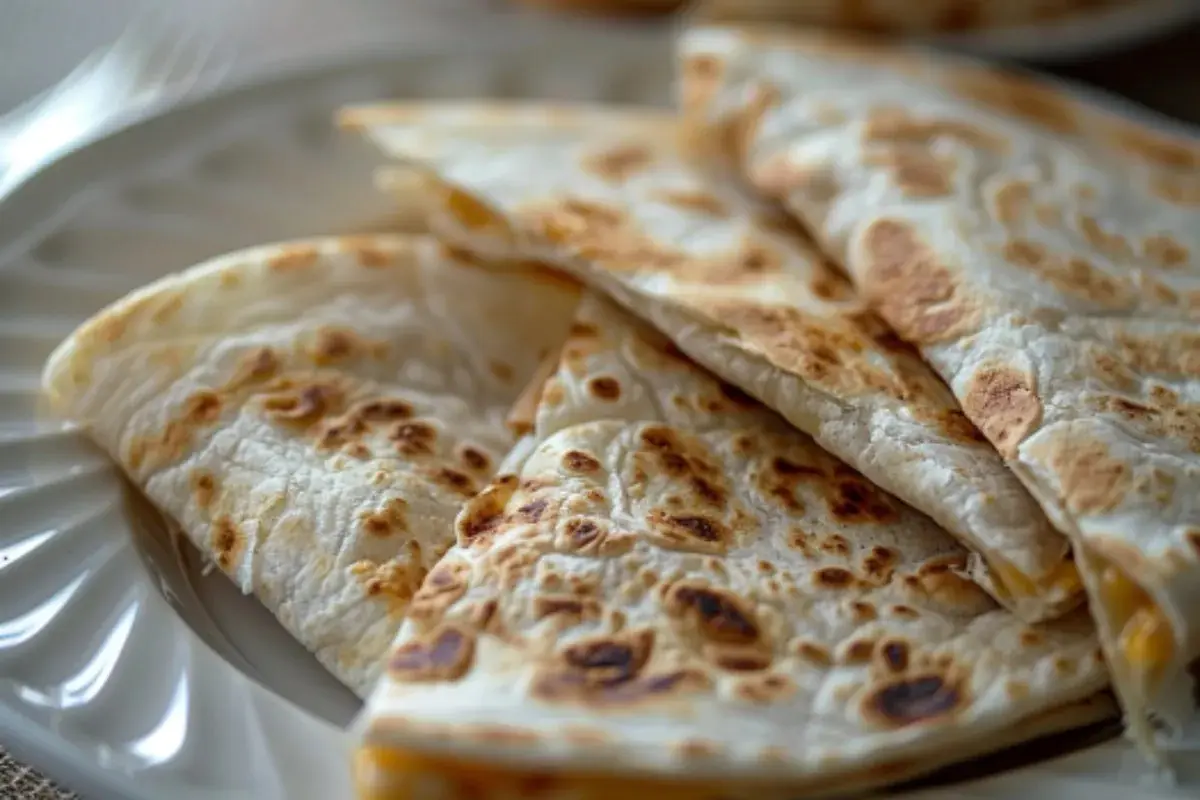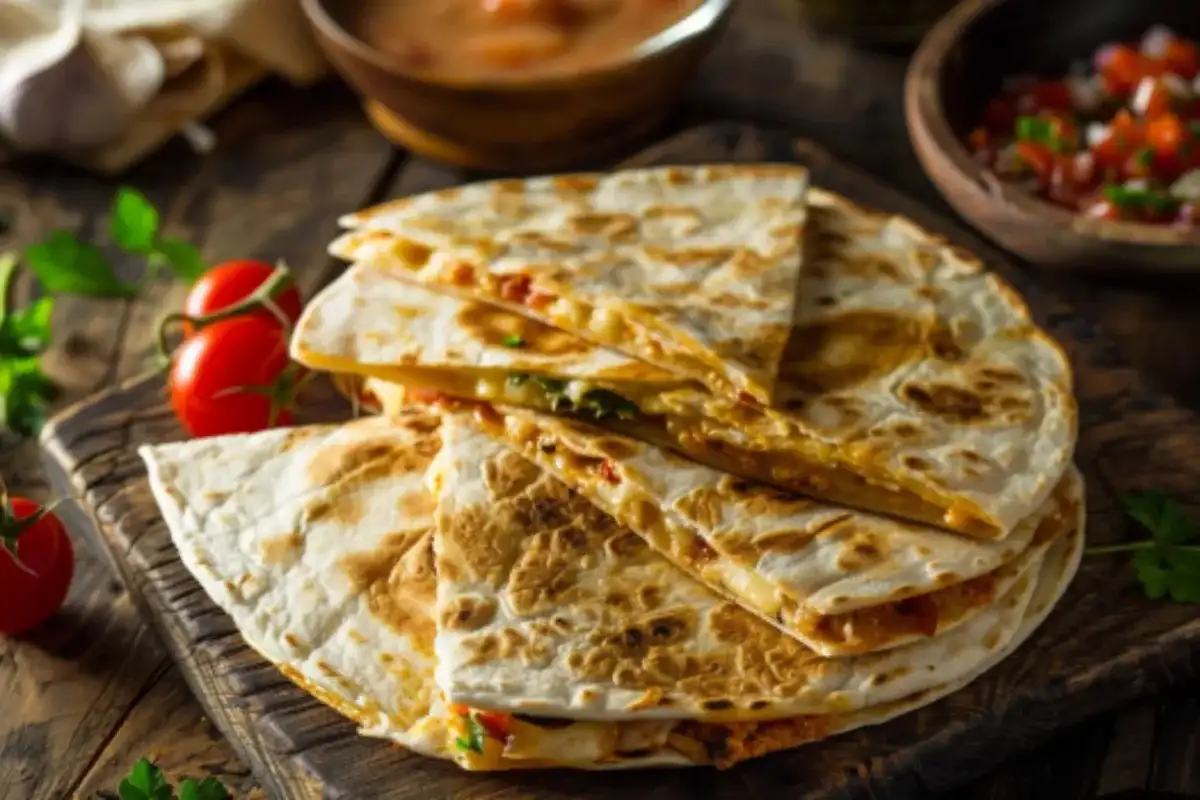When it comes to making the perfect quesadilla, a fundamental debate arises: should you use oil or butter? Many ask, ‘Do you cook quesadillas in oil or butter?’ This question has sparked discussions among food enthusiasts, chefs, and home cooks alike. The type of fat used for cooking quesadillas has a profound impact on their texture, flavor, and overall satisfaction. In this comprehensive guide, we’ll explore every facet of this debate, breaking down the science, techniques, and cultural practices behind cooking quesadillas. We’ll also discuss how fat selection can influence the final result and offer a variety of ways to prepare quesadillas to suit every preference.
The Cultural Importance of Quesadillas
Before we dive into the specific cooking techniques, it’s essential to understand the cultural significance of quesadillas. Originating in Mexico, the quesadilla has been a staple of the cuisine for centuries. Traditionally made with tortillas and cheese, the dish has evolved into an incredibly versatile culinary item. From street food stalls in Mexico City to gourmet kitchens worldwide, quesadillas have taken on countless variations. Many people wonder, ‘Do you cook quesadillas in oil or butter?’ Yet, one constant remains: they must be cooked with some form of fat to achieve the perfect texture.
Historically, in rural areas of Mexico, quesadillas were often cooked over a wood-fired stove using lard, another form of fat. Lard, known for its rich flavor and high smoke point, gave the quesadilla a unique crispiness. While lard isn’t commonly used in modern kitchens, its historical significance illustrates the integral role of fat in cooking quesadillas. Today, we explore more accessible options, such as oil and butter. For more on these authentic Mexican quesadilla recipes, check out this guide.
The Role of Fat in Quesadilla Cooking
Why Do You Use Fat to Cook Quesadillas?

At its core, fat plays an essential role in quesadilla cooking for a variety of reasons:
- Crisping the Tortilla: The fat creates a crisp outer layer on the tortilla, adding a satisfying texture.
- Heat Transfer: Fat evenly distributes heat across the pan, helping the cheese melt consistently without burning the tortilla.
- Flavor Enhancement: Both oil and butter impart distinct flavors to the quesadilla, elevating the overall taste of the dish.
- Preventing Sticking: Whether you use oil, butter, or a combination, the fat prevents the tortilla from sticking to the pan, making it easier to cook without tearing.
Let’s explore how the choice of fat can alter these characteristics.
Cooking Quesadillas with Oil: Pros and Cons
Oil is widely used in quesadilla preparation because of its high smoke point and neutral flavor. Many ask, ‘Do you cook quesadillas in oil or butter?’ When you fry quesadillas in oil, the high heat allows the tortilla to brown without burning. Oils like vegetable oil, canola oil, and olive oil are often preferred for their ability to provide an even, golden-brown exterior.
The high smoke point of oil means you can cook your quesadillas at a higher temperature, which helps achieve an ultra-crispy texture. This technique is especially popular in street food, where quesadillas are made quickly over high heat to maximize efficiency. In such settings, oil becomes the go-to choice due to its reliability.
Cooking Quesadillas with Butter: Is It Better Than Oil?
In contrast, butter offers a lower smoke point but brings an incomparable richness to the dish. Many wonder, ‘Do you cook quesadillas in oil or butter?’ Butter’s defining characteristic is its flavor, with its creamy, nutty notes enhancing the quesadilla. When butter is heated in a pan, it creates a slightly softer texture than oil while still producing a delicate crispiness. However, due to its water content, butter can sometimes steam the tortilla rather than frying it as effectively as oil.
If you cook quesadillas at too high a temperature using butter, you risk burning the fat before the tortilla is crisp, leaving an acrid taste. This is why quesadillas cooked with butter are often made over medium-low heat. Butter works best in cast iron or non-stick pans, where the heat distribution is more controlled.
Comparing Crispiness: Oil or Butter for Quesadillas?
If your goal is a quesadilla with a delightfully crisp exterior, oil might be the better choice. Because of its higher smoke point and ability to maintain high heat, oil ensures the tortillas crisp up uniformly. Butter, on the other hand, imparts a richness that oil cannot replicate, even though it might not achieve the same level of crunch.
But texture is not just about crispiness. Butter can make the tortilla more tender while still offering a slight crunch. If you like a softer quesadilla with a bit of bite, butter is the way to go.
Regional Variations: Do You Cook Quesadillas in Oil or Butter?
In different regions of Mexico, quesadillas are cooked using various methods and fats, contributing to a range of textures and flavors. The local availability of ingredients also dictates what type of fat is used. Let’s explore some regional quesadilla variations to understand how oil and butter or sometimes even no fat play a role in these culinary traditions.
Mexico City Quesadillas: Oil or Butter?
In Mexico City, quesadillas are often cooked on a large comal a flat griddle used in Mexican cooking. On the streets, vendors use oil to fry the tortillas, creating a golden, crunchy texture. The high-heat, oil-frying method allows them to churn out quesadillas quickly while ensuring a consistent crunch.
Interestingly, in Mexico City, quesadillas don’t always contain cheese. Common fillings include flor de calabaza (squash blossom), huitlacoche (corn fungus), or chicharrón (fried pork skin). For these heartier fillings, oil ensures that the quesadilla holds together and remains crispy.
Oaxacan Quesadillas
In Oaxaca, a region known for its rich culinary heritage, quesadillas are often cooked with quesillo (Oaxacan string cheese) and lard. Many ask, ‘Do you cook quesadillas in oil or butter?’ The lard gives the quesadilla an unmistakable depth of flavor, infusing the dish with the taste of pork fat. In modern kitchens, lard can be substituted with a combination of butter and oil to achieve a similar flavor profile.
Oaxacan quesadillas, often served with mole or salsa, are thicker and heartier than their Mexico City counterparts. The butter adds richness, while the oil ensures the quesadilla doesn’t become too greasy or soft.
Northern Mexico Quesadillas: Why Butter Is Preferred
In Northern Mexico, where flour tortillas are more common than corn, quesadillas are often cooked in butter. The soft, pliable flour tortillas soak up the butter, creating a flaky, tender result. Because flour tortillas have a slightly higher fat content than corn tortillas, they work well with butter without becoming soggy.
In this region, quesadillas are frequently served with grilled meats, such as carne asada, and butter complements these bold flavors.
Step-by-Step Guide to Cooking Quesadillas: Oil vs. Butter
How to Cook Quesadillas with Oil for Maximum Crispiness

If you prefer a crispier quesadilla, cooking with oil is your best bet. Here’s how you can do it:
- Heat the Oil: Start by adding a teaspoon of oil (vegetable, canola, or olive) to a skillet. Heat the pan over medium-high heat until the oil shimmers but does not smoke.
- Add the Tortilla: Place a tortilla in the pan, ensuring it’s coated evenly with the hot oil. Let it cook for about 1-2 minutes, or until it starts to brown.
- Add the Filling: Sprinkle your choice of cheese (cheddar, Monterey Jack, or queso asadero) over the tortilla. Add any other fillings like chicken, beef, or vegetables at this point.
- Top with Another Tortilla: If you’re making a double-layered quesadilla, place another tortilla on top.
- Flip the Quesadilla: After 2-3 minutes, carefully flip the quesadilla using a spatula. Allow it to cook on the other side for another 2-3 minutes until golden brown and crispy.
- Serve: Remove the quesadilla from the skillet, cut into wedges, and serve with salsa or sour cream.
This method produces a quesadilla with a golden, crispy exterior and a gooey, melted interior.
Cooking Quesadillas with Butter: A Flavorful Alternative
For a more indulgent, rich flavor, butter is an excellent choice for cooking quesadillas. Follow these steps:
- Melt the Butter: Heat a tablespoon of butter in a skillet over medium heat. Allow the butter to melt completely but be careful not to let it burn.
- Add the Tortilla: Once the butter is melted and slightly bubbling, place your tortilla in the skillet. Butter’s lower smoke point means you’ll want to cook at a lower temperature than oil to avoid burning.
- Add the Cheese and Filling: Like with oil, add your cheese and fillings to the tortilla, being careful not to overload it.
- Flip and Continue Cooking: After about 2 minutes, flip the quesadilla carefully and cook the other side for another 2-3 minutes. The butter will impart a beautiful golden hue to the tortilla.
- Serve: Remove the quesadilla and serve immediately.
While butter creates a softer quesadilla, it provides a richer flavor, making each bite more indulgent.
Alternative Cooking Methods for Quesadillas
In addition to the classic skillet-frying methods, there are several alternative ways to cook quesadillas, each offering a unique twist.
Grilled Quesadillas: Oil or Butter for the Best Results?
Grilling quesadillas offers a smoky flavor and works particularly well with heartier fillings like grilled vegetables or steak. Many wonder, ‘Do you cook quesadillas in oil or butter?’ Instead of using a skillet, you can place your quesadillas directly on a hot grill, brushing them lightly with oil or butter to prevent sticking.
The grilling process adds an extra dimension to the quesadilla, as the direct heat from the grill chars the tortilla, imparting a smoky flavor. This method works best with flour tortillas, which hold up better to the direct heat of the grill.
Baked Quesadillas
Baking quesadillas is an easy way to make multiple quesadillas at once, making it perfect for parties or family gatherings. Simply preheat your oven to 375°F (190°C), assemble your quesadillas as usual, and place them on a baking sheet. Brush each quesadilla with oil or butter before baking them for 10-12 minutes, flipping halfway through.
The result is a crispy quesadilla with evenly melted cheese. Baking is also a hands-off method, allowing you to focus on other dishes while your quesadillas cook to perfection.
The Final Verdict: Oil vs. Butter in Quesadillas

So, should you cook quesadillas in oil or butter? The answer depends on what you prioritize: flavor or texture.
- For crispiness, oil is the superior choice. It allows the tortilla to achieve that perfect golden-brown texture without burning.
- For flavor, butter is unparalleled. Its creamy, rich taste complements the cheese and other fillings, making for an indulgent quesadilla.
- For a balanced approach, combining oil and butter can give you the best of both worlds crispiness from the oil and flavor from the butter.
Experimenting with Fillings and Flavors
One of the best aspects of making quesadillas is their versatility. From traditional cheese quesadillas to more elaborate creations filled with grilled meats or vegetables, there’s no end to the combinations you can try.
Traditional Fillings
In its simplest form, a quesadilla contains just cheese and a tortilla. However, you can elevate this basic dish by adding any of the following:
- Carne asada: Grilled, marinated steak slices.
- Pollo asado: Grilled chicken, marinated in citrus and spices.
- Chorizo: Spicy Mexican sausage that adds a kick to your quesadilla.
- Vegetables: Grilled bell peppers, onions, mushrooms, and spinach make for a delicious vegetarian option.
Unique Flavor Pairings
If you want to get creative with your quesadillas, here are some unique flavor pairings to try:
- Brie and caramelized onions: A gourmet twist on the classic.
- Apple slices and cheddar: Sweet and savory come together beautifully.
- Avocado and bacon: Creamy avocado paired with crispy bacon adds rich texture and flavor.
Serving Suggestions and Accompaniments
Quesadillas are incredibly versatile when it comes to serving options. They can be enjoyed as a main dish or an appetizer. Here are some accompaniments to elevate your quesadilla experience:
- Salsa: Fresh salsa made from tomatoes, onions, cilantro, and lime juice adds brightness to the dish.
- Guacamole: Creamy, rich guacamole pairs beautifully with quesadillas, offering a cool contrast to the warm, cheesy interior.
- Sour cream: A dollop of sour cream provides a tangy counterpoint to the richness of the cheese and butter (or oil).
For more ideas on what to pair with your quesadillas, consider experimenting with different sauces and garnishes to match your fillings.
Common Mistakes to Avoid
Even with a straightforward dish like quesadillas, there are a few common mistakes that can prevent you from achieving the perfect result.
Using Too Much Filling
Overstuffing your quesadilla is a common mistake that can lead to uneven cooking. When there’s too much filling, the quesadilla becomes difficult to flip, and the cheese doesn’t melt uniformly. The key to a well-cooked quesadilla is balance.
Cooking at the Wrong Temperature
Another mistake is cooking at too high or too low of a temperature. If the heat is too high, your quesadilla will burn on the outside before the cheese has a chance to melt. Too low, and the quesadilla will be soggy rather than crispy. Medium heat is usually the sweet spot.
Skipping the Preheating Step
Whether you’re using a skillet, a grill, or an oven, always preheat your cooking surface before adding the quesadilla. This ensures that the tortilla cooks evenly and crisps up properly.
Quesadilla Myths Debunked
There are many misconceptions about cooking quesadillas, especially when it comes to the fat you use. Let’s debunk some of the most common myths:
“You Should Always Use Butter for Flavor.”
While butter adds flavor, it’s not the only fat that can do so. Oils, especially flavored ones like garlic-infused olive oil, can add a nuanced flavor to your quesadilla while still providing that crisp texture.
“Non-stick Pans Don’t Need Oil or Butter.”
Even with a non-stick pan, using some fat is beneficial. It enhances the flavor and ensures a more even cooking process.
“Corn Tortillas Are the Only Authentic Option.”
While corn tortillas are traditional in many regions of Mexico, flour tortillas are just as authentic in others, especially in Northern Mexico. The type of tortilla you use depends on the texture and flavor you want to achieve.
Conclusion: The Perfect Quesadilla Awaits
Whether you’re a fan of using oil for its crispiness or butter for its flavor, there’s no wrong way to cook a quesadilla. The key is experimentation try different fats, fillings, and cooking methods until you find the perfect combination that suits your taste.
By understanding how different fats impact your quesadilla, you can make more informed choices in the kitchen. Whether you prefer a street-food style quesadilla with a crunchy exterior or a soft, buttery version, mastering this versatile dish will open up a world of culinary possibilities.
Enjoy cooking, and may your quesadillas always be deliciously golden and perfectly melty!

